For the successful development and large, beautiful flowers of indoor gloxinia, a rest period is needed from mid-autumn to the end of winter. The flower at this time leaves fall and only the tuber remains. The grower needs to create favorable conditions for maintaining the viability of gloxinia during this period. Otherwise, the plant will become less attractive, stretch out and bloom poorly.
Content
Proper autumn care to maintain gloxinia until spring
Adult winter gloxinia in winter needs a long rest. If a plant has bloomed and formed tubers at least once, it falls into rest. Moreover, the larger the tuber in size, the more successful it is. Young gloxinia living only in the first year may not fall asleep for the winter. The tuber of such plants is less than 2 cm in diameter, therefore, without creating the necessary conditions, they dry out and die.
Dormant onset
The birthplace of gloxinia is South America. Therefore, in its development, the plant adheres to the seasonality of this region. Rest time, when to clean gloxinia for storage in the winter, usually occurs in September or October. Then in her homeland drought begins.
If this does not happen on time, the flowering periods shift. According to the rules, they should be in spring and summer. To avoid this, care is taken in early autumn to prepare for winter. With late flowering, it is expected to be completed, and then special preparations are carried out.
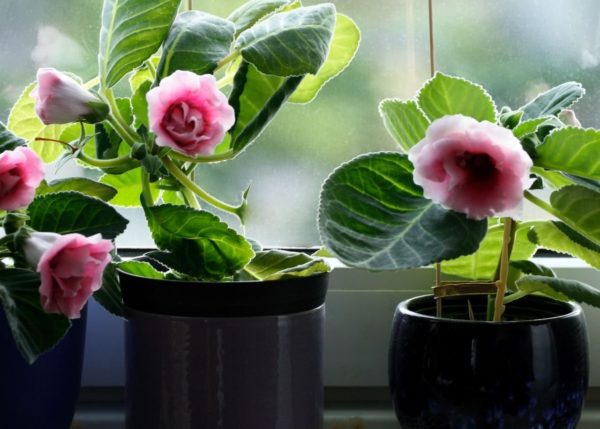
Winter preparations
Caring for gloxinia in the winter at home is to create a special microclimate to maintain the viability of the tubers. The plant needs preliminary preparation for winter. In September or October after flowering, the light intensity is reduced. To do this, the flower pot is moved to a window facing the north side. The temperature is maintained no more than +15 degrees. Make potassium top dressing once. Watering is gradually reduced, once every 7 days moistening the soil with a small portion of water.
When the death of the leaves begins, watering is stopped completely. During this period, the upper part of gloxinia still does not need to be trimmed so that beneficial substances descend from the green mass into the tuber. If you do not follow this rule, vegetation processes will resume. When the green part of gloxinia completely dies out on its own, it is cut off, leaving a stump 1 cm high.
Tuber storage
After completion of the preparatory measures, the tubers of adult gloxinia are removed from the soil for subsequent storage. It is convenient to do this by the transshipment method:
- Transfer the earthen lump from the pot into a large wide tank.
- Using your fingers, gently knead the soil and divide it into several parts.
- The tuber is removed and the remaining soil is removed from it.
Methods and conditions of storage of tubers
For wintering gloxinia at home, different methods are used. A plastic bag with a mixture of wet sawdust and washed and warmed up river sand heated in an oven is suitable for storing the developed root. The mixture is slightly moistened.Otherwise, the tubers will turn sour due to lack of air and a large amount of water.
The prepared mass is poured into the lower part of the dense package. Then they put the prepared tuber into it and fill it with residues so that it is completely hidden from view. After that, remove the bag in a suitable place for wintering.
A room for the successful preservation of tubers in winter should meet the following requirements:
- lack of intense lighting;
- air temperature not lower than +3 degrees and not higher than +15 degrees;
- moisture content from 60 to 90%.
These conditions are closest to the natural conditions under which gloxinia hibernates in its homeland. The easiest way is to create the necessary microclimate by putting packages with onions in the bottom drawer of the refrigerator, designed for vegetables. This option to store gloxinia is suitable if there are few plants.
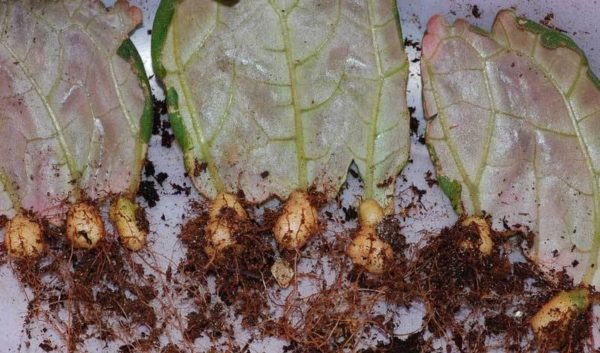
Another suitable option is to place bags of tubers on a glazed, but unheated loggia or balcony. Air in this case should not be warmed above +20 degrees. Otherwise, the tubers will leave the stage of rest ahead of time.
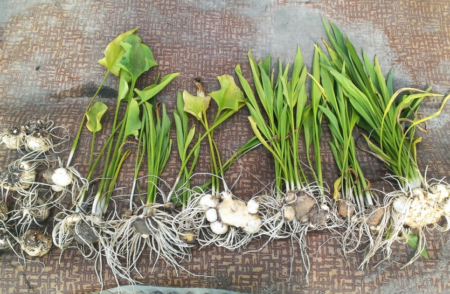 You may be interested in:
You may be interested in:If the house has a cellar with considerable depth, where the temperature is maintained in winter at +5 degrees, the gloxinia roots are placed in it. Ideally, if there is no fungus or mold on the walls in such a room and constant humidity is maintained. In such conditions there is no need to additionally moisten the soil in the bag. He will always be in optimal condition.
If there is no place for a refrigerator, a suitable balcony or cellar, packages with tubers are placed under the bath. In this case, the conditions for humidity and light are fulfilled, only the temperature remains high.
Periodically, the tubers are inspected during storage so as not to miss the formation of rot. If traces of damage by putrefactive processes have appeared, damaged areas are cut to a normal tuber and sprinkled with ash or crushed activated carbon.
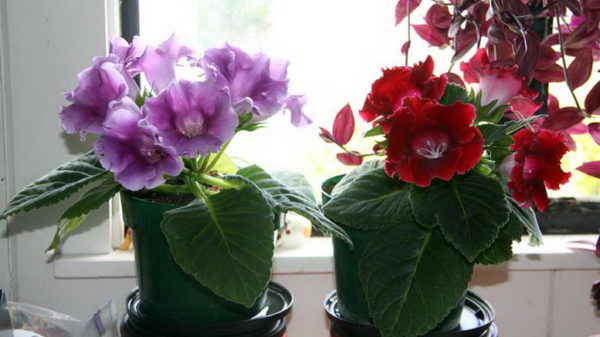
Soil storage
It is much easier to take care of the flower in winter if you do not remove the roots from the soil. Preliminary preparation in this case is carried out in the usual way. Then the container with the root system located in it is moved to a colder room. You can put it on the floor near the balcony door, but there should be no heating appliances nearby. This ensures optimum temperature.Another option is to place the cache-pot on an unheated glazed loggia or move it to the cellar. Any room where the temperature will be significantly lower than that created during the growing season is suitable.
The topsoil is sometimes wetted with water. You should not water the ground too much, but you must not allow the soil to completely dry out. In this way, it is good to store tubers in the bathroom. For additional cooling, it is sometimes recommended that ice pieces be laid out on the surface of the soil.
Advantages and disadvantages of storage methods
The proposed methods for maintaining the viability of tubers are used in accordance with the age and condition of the plant. They have their pros and cons:
- young gloxinia is left in the ground for the winter, so it is more likely to prevent the tuber from drying out;
- if there is not a suitable place for placing pots or flowers very much, then the out-of-ground method is more suitable;
- when placing tubers in bags, the risk of rot formation increases, so they are often checked;
- it is most convenient to keep gloxinia packets in the refrigerator in the winter;
- if there is no suitable room or large refrigerator, it is optimal to place the roots for storage in the bathroom;
- Gloxinia purchased in the fall can be preserved in a soilless manner with mandatory preliminary disinfection.
Winter care for young gloxinia
For young plants, the period of winter dormancy proceeds differently. In the flowers of the first year of life, a tuber is formed very small. Therefore, without additional moisture in the winter, he will die. Such specimens are not immersed in hibernation. Since the daylight hours are short at this time of the year, plants are arranged for additional illumination, extending it to 12 hours.
It is important to maintain the optimum temperature. If the room is hot, the plant will develop the aerial part and stretch the stem instead of increasing the mass of roots. Therefore, the temperature should be maintained at +20 degrees. Watering the flower rarely, so as not to provoke the rotting of the tubers.
For gloxinia, which have already bloomed once, a special approach is required. They have already managed to form a medium-sized tuber. Therefore, they create conditions for a flower to be drowsy. To do this, put the pots on the north side and sometimes watered with a small amount of water. When daylight is lengthened, rested gloxinia will again begin to grow.
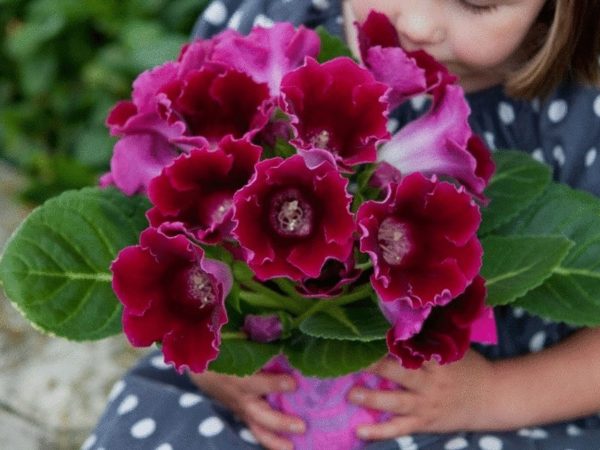
Awakening Gloxinia
With the end of winter, young shoots hatch on the tubers. This indicates the plant is getting out of sleep. Then they prepare fresh soil, water it a little and plant tubers in it. They do not need to be deeply buried, the top is better left on the surface. Watering begins 7 days after planting. Strongly the plant is not poured, so as not to provoke fungal diseases.
In the initial growing season, weak shoots are removed, leaving only a few of the strongest. This is necessary for better tuber formation. It depends on his strength how beautifully and magnificent gloxinia will bloom.
Possible problems
If the tubers were stored in unsuitable conditions, they wake up early. To solve this problem, there are several solutions:
- If very small sprouts appeared on the tuber, then they are left and reduce the amount and volume of moisture.
- Large shoots are cut, and the root is returned to the storage location. In the spring they transplant it into the prepared soil.
- Immediately plant a tuber in a container and fill it with fluorescent lamps. Then the plant grows weak and very thin. At the end of winter, the top of such a flower is cut off and rooted in another pot. After a short time gloxinia gives young shoots.
- Keep awakened tubers in cooler conditions to slow development. At the same time create high-quality natural lighting.
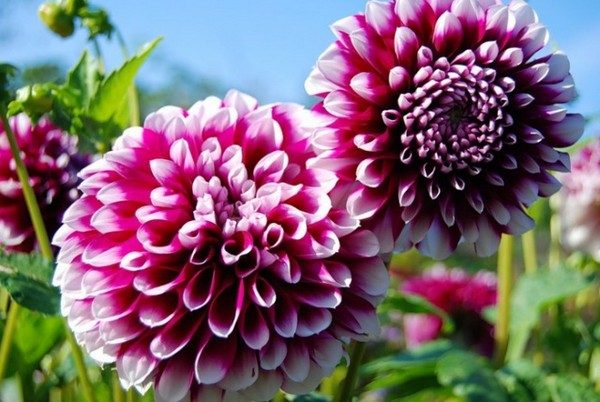 You may be interested in:
You may be interested in:When the flower does not wake up at the appointed time, its viability is restored as follows:
- At the bottom of the plastic bag lay 2-3 tbsp. l light soil by wetting the trail with water.
- Place the onion on the ground and seal the bag.
- The bag is placed in a well-lit place so that it has a temperature of +24 to +28 degrees.
- Every 3 days the bulb is aired.
After 15 days, the tuber sprouts. Their number depends on the quality of lighting. The better it is, the more sprouts are formed. The awakened plant is transplanted into a pot, leaving 2 shoots on the tuber. Unnecessary are cut and used as a means of reproduction.
When in a greenhouse, a tuber can turn green. This is normal, after planting in the ground it will become the usual shade. Sometimes upon awakening, the roots appear first, not the green mass. Then it is also transplanted into a pot, sprouts appear after a few days.
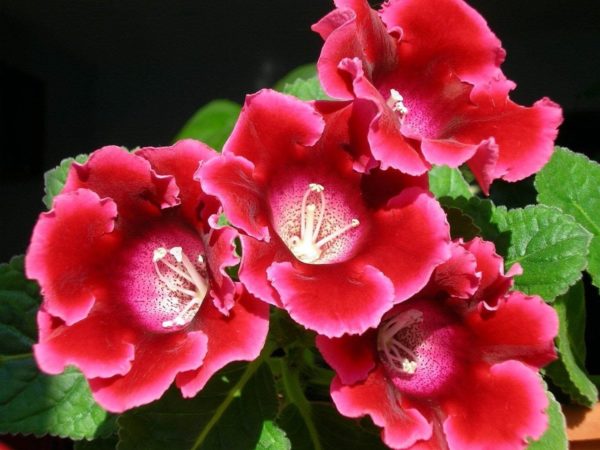
Wintering without rest
When gloxinia does not fall into a state of rest, it loses its attractiveness and is greatly extended. Lack of rest leads to the fact that few flowers appear. To avoid this, the plant is sent to rest forcibly.
To do this, cut off the upper part of the flower in October, without waiting until it fades on its own. The containers are rearranged in a darkened, cold room.
When the flowering of such a plant ends, cut off the upper part, leaving a couple of lower leaves. Soon, new leaves grow from the sinuses. Care for such gloxinia is continued in the usual way.
Conclusion
With proper preparation and timely implementation of all recommendations, gloxinia wintering is successful. With the onset of spring, the awakened plant begins to actively develop and soon delights with beautiful and abundant flowering.




 Sow in the ground, without seedlings: 10 beautiful and unpretentious flowers
Sow in the ground, without seedlings: 10 beautiful and unpretentious flowers Platicodon planting and outdoor care
Platicodon planting and outdoor care Hosta - planting and care in the open ground in the Urals
Hosta - planting and care in the open ground in the Urals Oleander - care and growing at home
Oleander - care and growing at home